Renaissance Patrons: How the Medici Family Sculpted Florence's Skyline
The Medici transformed Florence into an open-air museum. Take a tour of Florence’s Renaissance architecture through the heritage of the Medici.
The influence of the Medici family on Florence’s cityscape is hard to underestimate. Opulent palaces and art-filled cathedrals tend to grab all the attention when strolling through the narrow streets of Italy’s Renaissance capital, but the story of the city’s development is often told through subtle details and treasures hidden in the backrooms of former residences.
Over the course of three centuries, the dynasty of bankers grew to become the political powerhouse responsible for the transformation of Florence. Politics and aesthetics were deeply intertwined. Originating from the Tuscan countryside, the Medici ascended to unchallenged rulers of the city by blending political shrewdness, artistic patronage and diplomatic strategy.
From a cultural perspective, the Medici’s legacy remains most visible in the vast artistic heritage filling Florentine museums. Following his rise to power in 1434, Cosimo I de’ Medici proclaimed himself “patron of the arts,” initiating the family tradition of funding the rebirth of classical arts by financing the work of architects, sculptors, painters, poets and philosophers. Michelangelo built his name thanks to support by Lorenzo the Magnificent and the Renaissance movement itself is often said to be the result of the Medici's interest in the arts.
The Medici's architectural and artistic projects were not merely an attempt to show their wealth but a sophisticated orchestration of influence, embedding their legacy into the city’s very infrastructure. Their contributions were tactical, leveraging art and architecture as tools for maintaining and extending their influence through cultural manipulation. When the Medici’s power reached its peak, the family would come to own nearly the entire region of Tuscany but their influence reached even further. Four members of the Medici family would be elected popes of the Catholic Church and through their roles, they managed to open a direct channel of influence that connected Florence with the Vatican.
The redevelopment projects meant to modernize Florence during its brief stint as unified Italy’s capital (1865-1871) transformed some of the core elements of the city, but the UNESCO-inscribed historic center remains a testimony of the Medici vision for Florence’s flourishing. To start discovering such a legacy, there is no better place to start than the San Lorenzo neighborhood.
Palazzo Medici Riccardi, where it all started
Steps away from the bustling railway station that links Florence to most major Italian cities, extends the city’s historic market — here, thousands of people flow between stalls daily, elbowing each other between leather souvenirs of dubious quality. It is right behind this chaotic corner of the city that the Medici’s first Florentine residence — a cornerstone of their architectural legacy — is found.
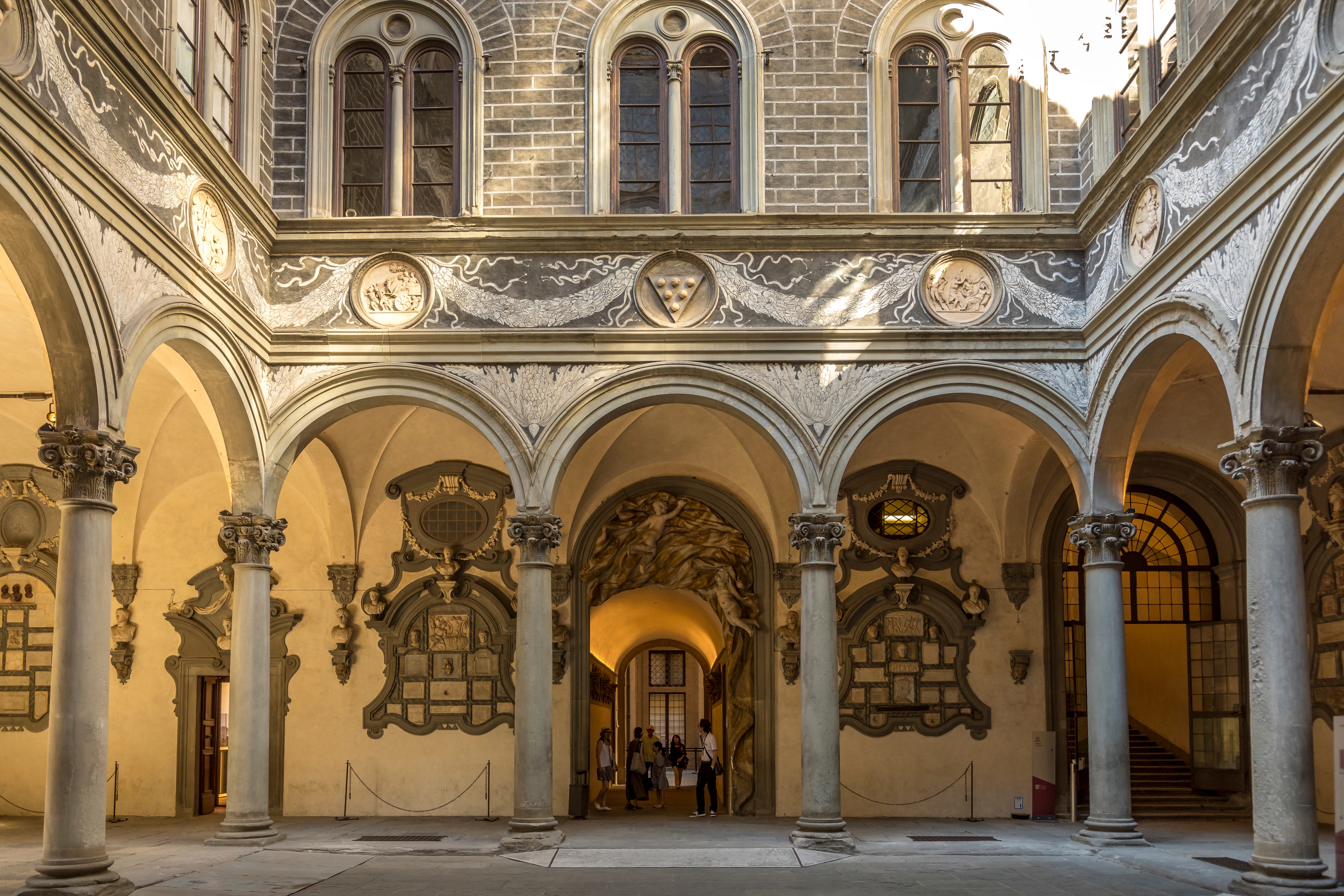
The Palazzo Medici Riccardi was commissioned by Cosimo the Elder in 1444. Educated in humanist circles, Cosimo is considered the founder of the Medici dynasty — after inheriting the family banking business from his father Giovanni, Cosimo scaled up the financial enterprise to an unprecedented size, opening branches in London, Paris and Bruges. The enormous wealth he acquired rapidly became the tool to maneuver politics in his favor from behind the scenes, without ever taking up official roles in the city’s institutions. Corruption, patronage practices, strategic weddings and alliances were all part of the game.
On the outside, Palazzo Medici Riccardi presents itself as stately but not over the top. This is by design — despite his success, Cosimo didn’t want to attract too much attention. An initial proposal for the palace’s design was created by none other than Filippo Brunelleschi, the mind behind Florence’s iconic Duomo, but scrapped as it was deemed too ostentatious.

As you enter Palazzo Medici Riccardi from Via Cavour, you find the Cortile di Michelozzo, named after the architect who would eventually receive the commission for the project. This space played host to an illustrious roster of historical figures, including renowned artists such as Donatello, Michelangelo, and Botticelli. The centerpiece of Palazzo Medici Riccardi, however, is the Magi Chapel painted by Benozzo Gozzoli, found on the upper floor — the fresco covering the walls, completed in 1459 after four years of work, depicts a colorful procession of hundreds of people, including some prominent Florentines, following the Biblical Magi on their way to Jerusalem.
Basilica di San Lorenzo, the family church
Filippo Brunelleschi may not have had his design for the Medici’s residence accepted, but he did contribute to creating the family’s own church — the Basilica di San Lorenzo. Steps away from Palazzo Medici Riccardi is this one-of-a-kind church whose rough facade was left without decoration. Built on the foundation of a previous temple dating back to the 4th century, San Lorenzo’s basilica monumentally expanded in the 15th century as the Medici chose it as their spiritual home.
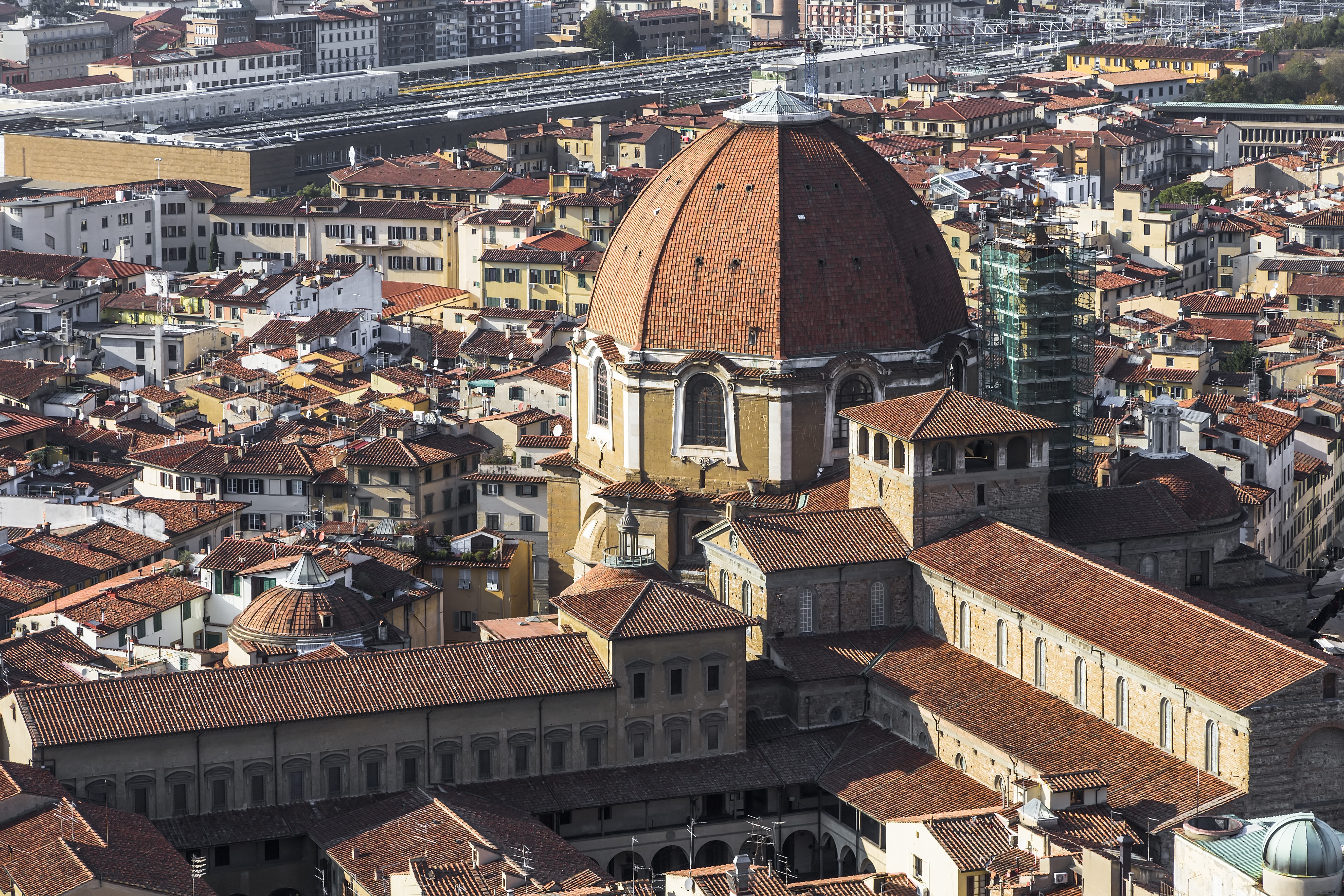
Cosimo the Elder — whose tomb is found in the basilica’s crypt, now Museo del Tesoro di San Lorenzo — commissioned Brunelleschi with a new design for the church in 1425. Almost a century later, Pope Leone X, a member of the Medici family, decided that Florence’s most renowned artist would be in charge of designing the facade. Michelangelo Buonarroti, however, didn’t manage to complete the exterior, which has been left bare for the past six centuries.
Michelangelo did contribute in other ways. The Basilica di San Lorenzo is home to the outstanding Biblioteca Laurenziana, one of Italy’s most important manuscript collections, containing over 12,000 texts that once belonged to Cosimo the Elder and his grandson, Lorenzo the Magnificent. It was with Lorenzo that Florence flourished as a center of the arts - under his reign, artists like Leonardo da Vinci and Michelangelo received support to create some of the timeless works they continue to be known for. The return to classical arts resulted from Lorenzo’s humanistic education - Biblioteca Laurenziana is a testament to the cultural shift that occurred during the Renaissance, embellished by the vestibule designed by Michelangelo himself.
Palazzo Vecchio, the center of power
The towering Palazzo Vecchio, overlooking Piazza della Signoria, has functioned as the core of Florence’s political power for over 700 years. It continues to do so — the castle-like palace still houses the mayor’s office. Palazzo Vecchio predates the arrival of the Medici in Florence, but few buildings have more embedded with the history of the dynasty.
Designed by legendary architect Arnolfo di Cambio in 1299 to host the republic’s functionaries, it became the Medici’s new residence in 1540, when the first Grand Duke of Tuscany Cosimo I decided to settle in with his court. By this time, the Medici were no longer leveraging their influence covertly — Cosimo I was now ruling over the city from this prime location, leaving no doubt about who was in charge.

Still vividly displayed as a reminder of Cosimo I’s power, is his portrait depicted at the center of the coffered ceiling of the incredible Salone dei Cinquecento, the palace’s grandiose meeting hall. Giorgio Vasari’s fresco “L'Apoteosi di Cosimo I” (1565) hovers above the frescoed room where Leonardo da Vinci and Michelangelo once met.

Perhaps, Cosimo I wanted his position as the city ruler to be set in stone because he knew that his predecessors had risked losing it to competing forces — next to being the center of power, Palazzo Vecchio reminds of Florence’s most famous conspiracy against the Medici. In 1478, members of the Pazzi family, another influential name in local politics, had attacked Lorenzo the Magnificent and his brother Giuliano inside the Santa Maria del Fiore Cathedral, Florence’s main church. Giuliano was killed but Lorenzo survived. The conspirators were caught and executed. Their rotting bodies were hung from the windows of Palazzo Vecchio to show the whole city the consequences of an insurrection against the elite.
Uffizi, from administrative offices to world-class museum
While it is true that Palazzo Vecchio was already there when the Medici moved in, Cosimo I made huge investments in the expansion of the palace. These included the construction of the Uffizi Gallery, now one of the world’s most renowned art museums and one of Italy’s most visited. Back then the Uffizi (offices) were created to house the Florentine magistrates working for the Grand Duke. In charge of building the U-shaped gallery was Giorgio Vasari, who linked Cosimo I’s residence to the elevated rooms facing the Arno River.
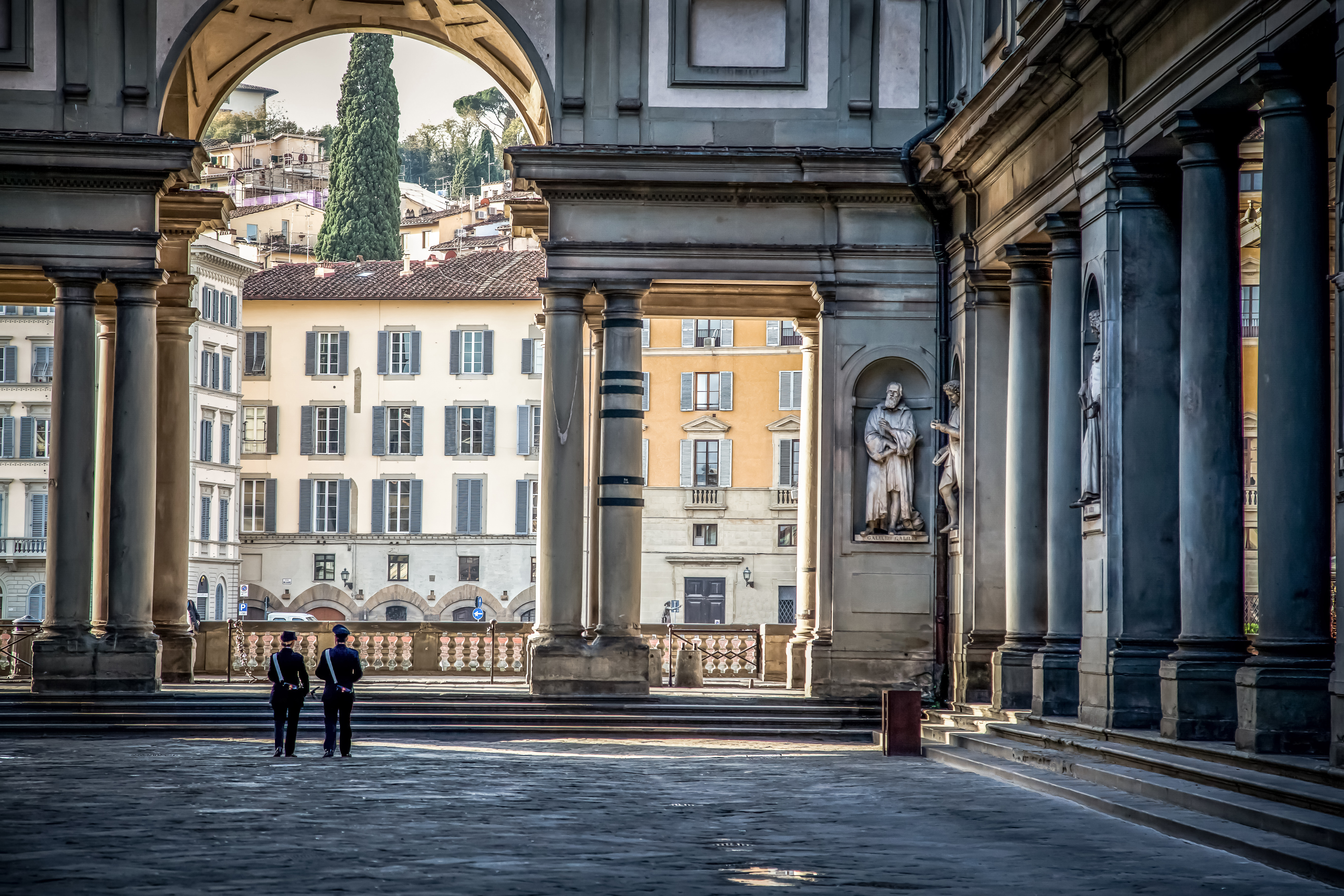
Over time, the purpose of the Uffizi began to change, transcending administrative functions. The upper floors began to be used as a showroom for the Medici’s vast art collection, an invaluable display of wealth that only a few privileged guests could admire. Only in the 18th century, the last Medici heiress, Anna Maria Luisa de' Medici, bequeathed the private collection to the city of Florence and the Uffizi became a public museum for the first time, housing seminal works by artists of the caliber of Botticelli, Michelangelo, and Leonardo da Vinci.
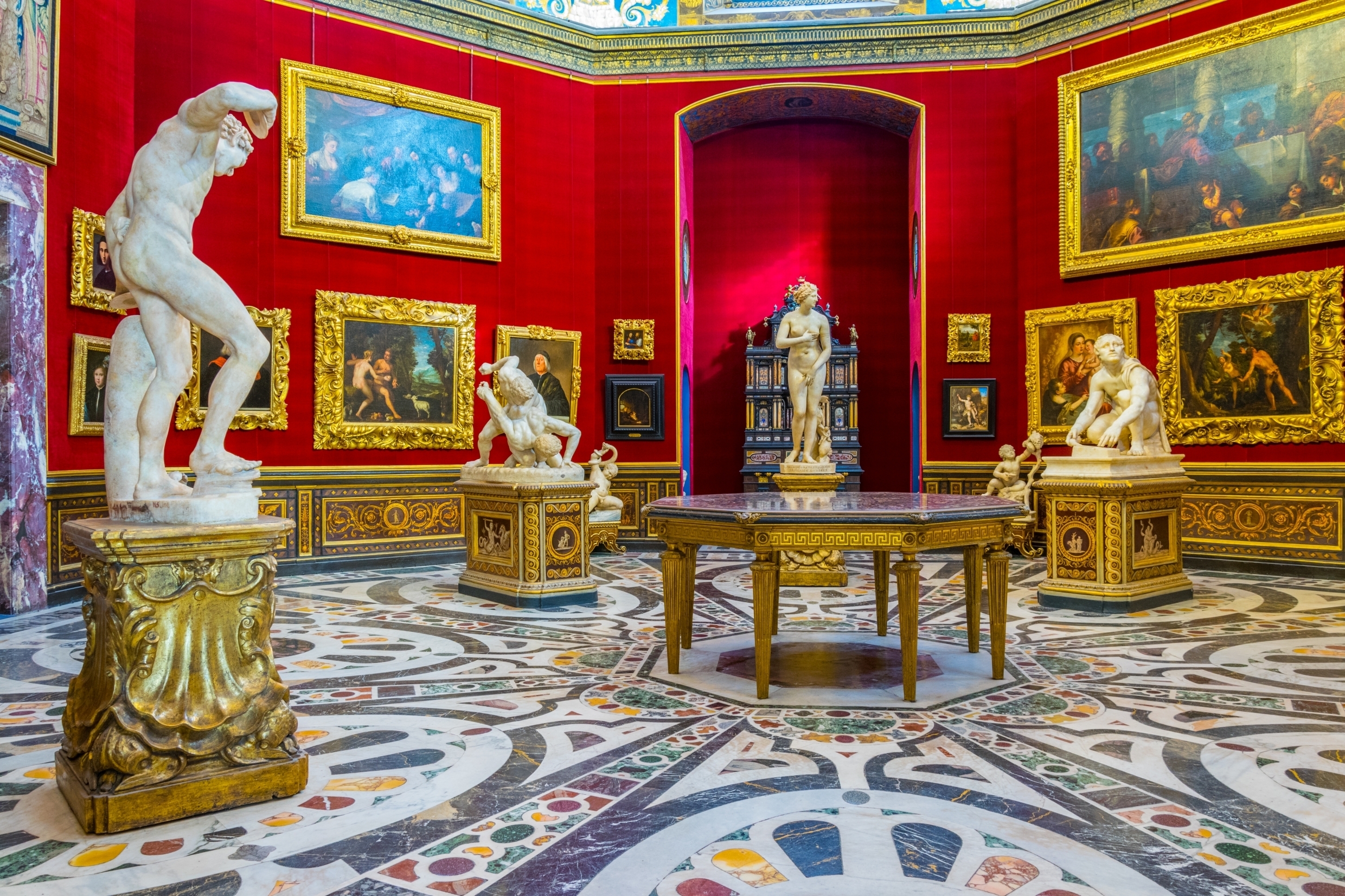
The Uffizi's corridors, lined with masterpieces, not only exhibit the artistic genius of the Renaissance but also narrate the cultural and political history of Florence as it intertwined with the legacy of the Medici family.
Palazzo Pitti, on the other side of the Arno
In the mid-16th century, the Medici decided to relocate. The largest palace of the Oltrarno — literally “the other side of the Arno” had been acquired by Eleonora di Toledo, Cosimo I’s wife from the Pitti family in 1549. The story has it that the duchess, who was ill with tuberculosis, believed that moving to the less crowded southern side of the city would benefit her health — work began to expand Palazzo Pitti into a new royal residence worthy of the Medici’s grandeur.
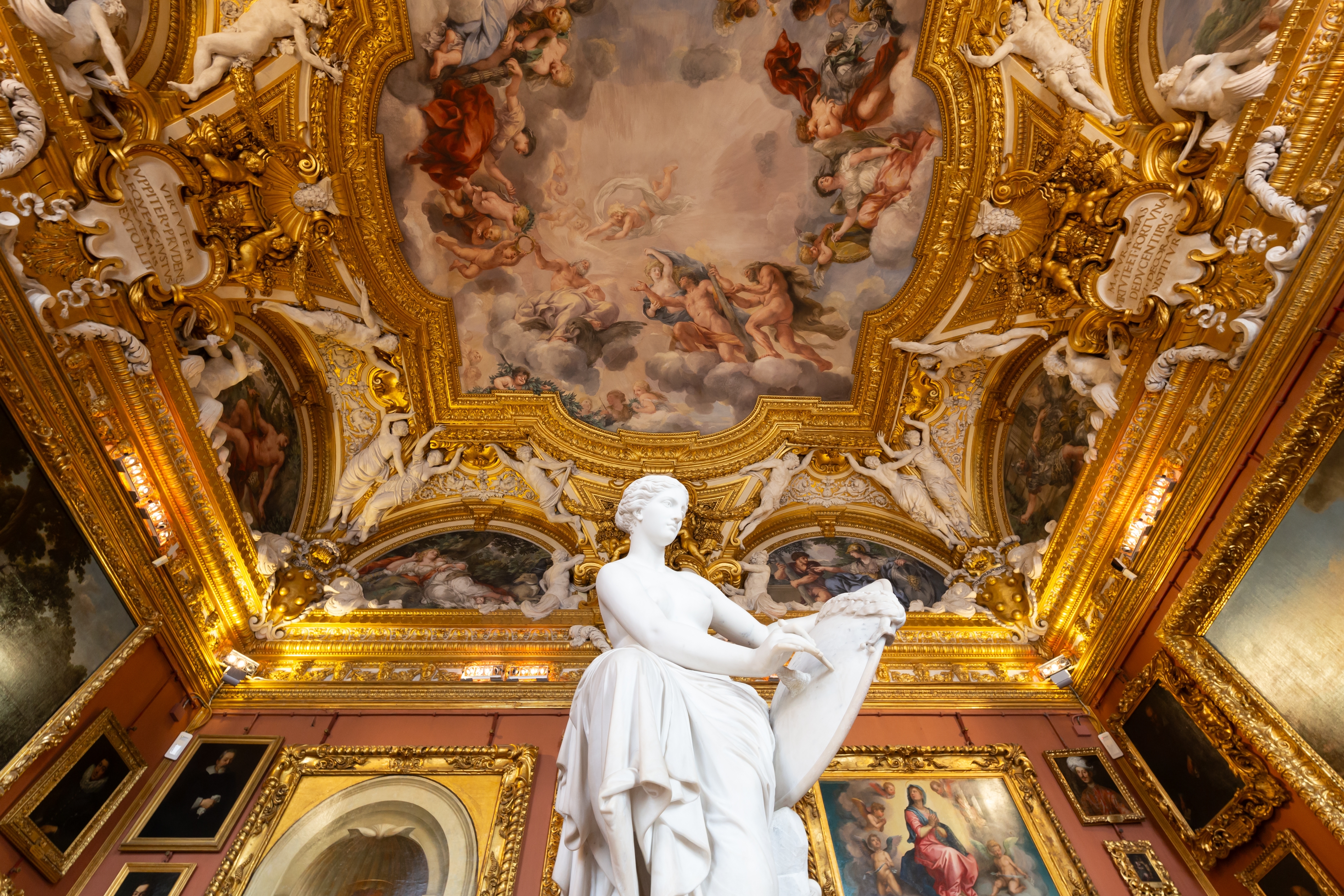
The cubic palace designed by Filippo Brunelleschi was upgraded by court architect Bartolomeo Ammannati, who enlarged the structure and began building the marvelous Boboli Gardens. With their symmetrical patterns, geometrically arranged walking paths, and monumental fountains, the Boboli Gardens became a template for aristocratic residences across Europe — a symbol of the Renaissance’s vision to blend art and nature that would influence the architects of both Versailles and Peterhof.
To consolidate their power on both sides of the city, the Medici commissioned Giorgio Vasari with the construction of an elevated corridor that would connect the administrative offices in Palazzo Vecchio and their new home in Palazzo Pitti. Look up when walking across Ponte Vecchio — the Corridoio Vasariano still stretches across the Arno River for over one kilometer, linking two of the city’s most symbolic buildings. You’ll also notice that all the stores on Ponte Vecchio sell either gold or silver. This is not a coincidence. Originally, the bridge’s stores were all operated by beccai (butchers), but in 1593 the son of Cosimo I, Grand Duke Ferdinando I, decided to evict all businesses involved in “vile arts” as he could not stand the smell while walking across the bridge on the Corridoio Vasariano. Since then, only goldsmiths and jewelers have been allowed to trade on the bridge.
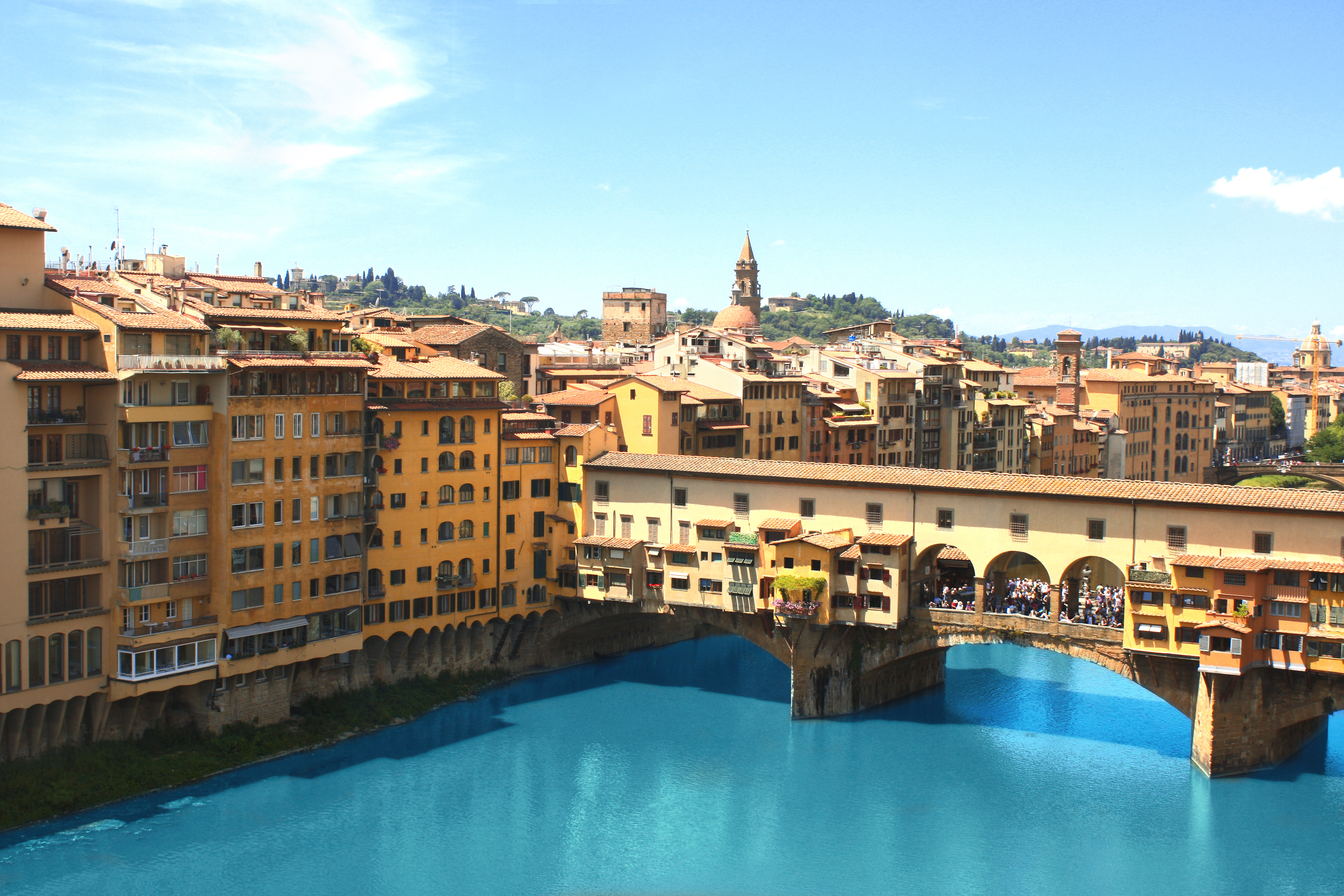
Cappelle Medicee, the place of rest
Back to the San Lorenzo neighborhood. Our tour of the Medici-influenced Florentine architecture ends in the back of the Basilica di San Lorenzo, now Cappelle Medicee Museum. Here, one of Michelangelo’s masterpieces encloses the tombs of some of the most prominent members of the Medici family. Enter the Sagrestia Nuova, built between 1520 and 1534, to admire the harmonious blend of marble pillars, arches, balustrades and windows that cover the monumental tombstones of Lorenzo and Giuliano de’ Medici.
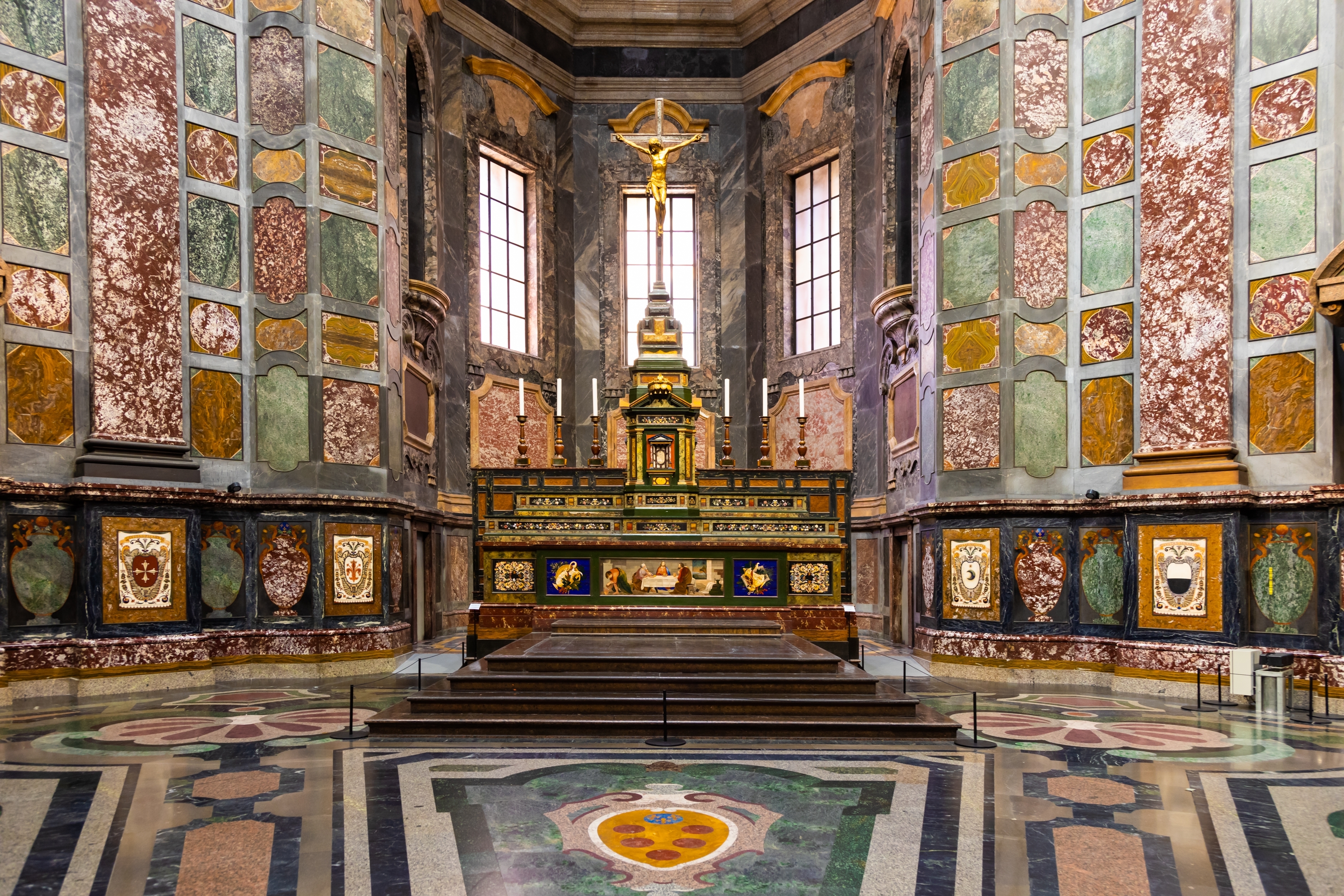
This is the place the family that ruled over Florence from 1434 to 1737 chose as its resting place. But the Medici’s influence extended well beyond Florence — into the papacy and the political circles of Italian and European cities. Their Florentine government ended with the death of Gian Gastone, the last Medici ruler in Tuscany, but the dynasty’s legacy remains embedded in the city’s urban fabric and European art as a whole.
The End of the Medici
As the 14th century came to a close, the Medici had grown into one of the most influential families in Florence, maneuvering city politics through arranged marriages, lobbying operations and artistic patronage. Having friendly figures in all the right places, the Medici ruled for 300 years over Florence, extending their dominance to most of Tuscany in the 16th century. In 1718, with no more male heirs, the family left the political scene.
Touring the Medici’s Architecture, in and around Florence
Visiting the palaces, churches and museums commissioned by the Medici is easy - all major attractions are within walking distance from one another, although each one of them requires a separate ticket. Important museums such as the Uffizi and the Cappelle Medicee are crowded during peak tourist season - expect queues and plan to visit early in the morning for the best chances of having some quiet time around the incredible artworks. If you want to explore the Medici’s legacy further, plan a trip to the countryside to visit the 12 villas and gardens that once belonged to the family scattered throughout Tuscany. These UNESCO-inscribed, art-filled residences, often used as retreats from city life, continue to stand as a testament to the reach and wealth of the most powerful family in Tuscany’s history.
